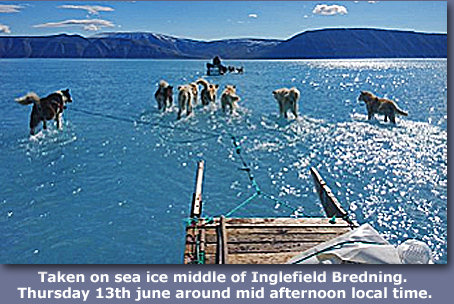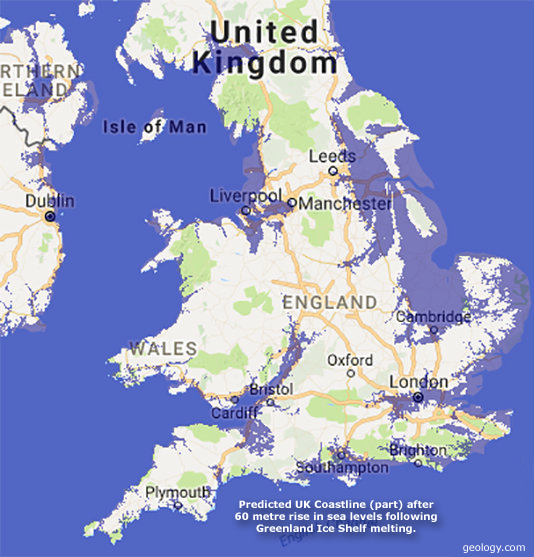 |
|
|
|
This one incredible, yet frightening photograph of conditions in just one part of Greenland this month (13th June) illustrates the sudden changes in weather conditions and an increase in air temperatures caused by Global Warming, in just ten years. In the image, research scientist Steffen Olsen, a scientist with the Danish Meteorological Institute (DMI), his sled dogs are seen trudging through melted water on top of an ice sheet in North West Greenland.
These huskie dogs are literally paddling through surface water across what was solid sea ice, now turned into melt water in a 15 degree On Twitter, Steffen Olsen said when asked about the depth of the ice below the melt water: “Yes, we know the ice is around 1.2m thick and that we have about 870m water below us. Together with the local hunters we have been measuring also ice thickness from December to now. An ongoing activity for almost a decade now.” Communities in Greenland rely on the sea ice for transport, hunting and fishing. Extreme events, here flooding of the ice by abrupt onset of surface melt are symptomatic of the problem of Global Warming which is beyond reversing according majority of scientists, whilst others say we have only 11 years (2030) in order to stop it at this point; whilst government’s claim we have until 2050! Erica Sanchez and Sushmita Roy from Global Citizen’s website continue the story: Greenland experiences melting from June to August, with most of the melting taking place in July, this year has already witnessed massive amounts of ice loss. About 40% of Greenland experienced melting on June 13 — the day Olsen took the photo — with more than 2 billion tons of ice melting, according to recent estimates “Last week saw the onset of very warm conditions in Greenland and in fact much of the rest of the Arctic, driven by warmer air moving up from the south,” Ruth Mottram, a climate researcher at the DMI said in an emailed statement. “Given how warm it was it’s easy to see why there was a lot melting!” Because the ice in the area forms reliably and in thick layers, there are few fractures in the ice through which the melted water can drain, Mottram explained, leading to the phenomenon seen in Olsen’s photos. Mottram added that it is too soon to conclude how much of the melting event was caused by rising global temperatures because, even though temperatures were unusually high, the conditions were not unprecedented. Scientists have predicted a record year for melting on the Greenland ice sheet. While previous melt periods occurred in 2007, 2010, and 2012, "we didn't see anything like this prior to the late 1990s," Thomas Mote, a research scientist at the University of Georgia who studies Greenland's climate, told CNN last week "Greenland has been an increasing contributor to global sea level rise over the past two decades," Mote said, "and surface melting and runoff is a large portion of that." Experts say that the effects of early melting could be cumulative and more ice could be lost in the future as ice and snow are better adapted to deflecting the sun’s rays and absorb less heat than water. An increase in ice loss could result in more heat absorption that could cause further melting. Mottram added that the forecasts predict the warm conditions over Greenland would persist at least for another few days, so the dog sled teams will continue to face these challenging conditions.
Source: Global Citizen / Geology.com / Steffen Olsen
|


